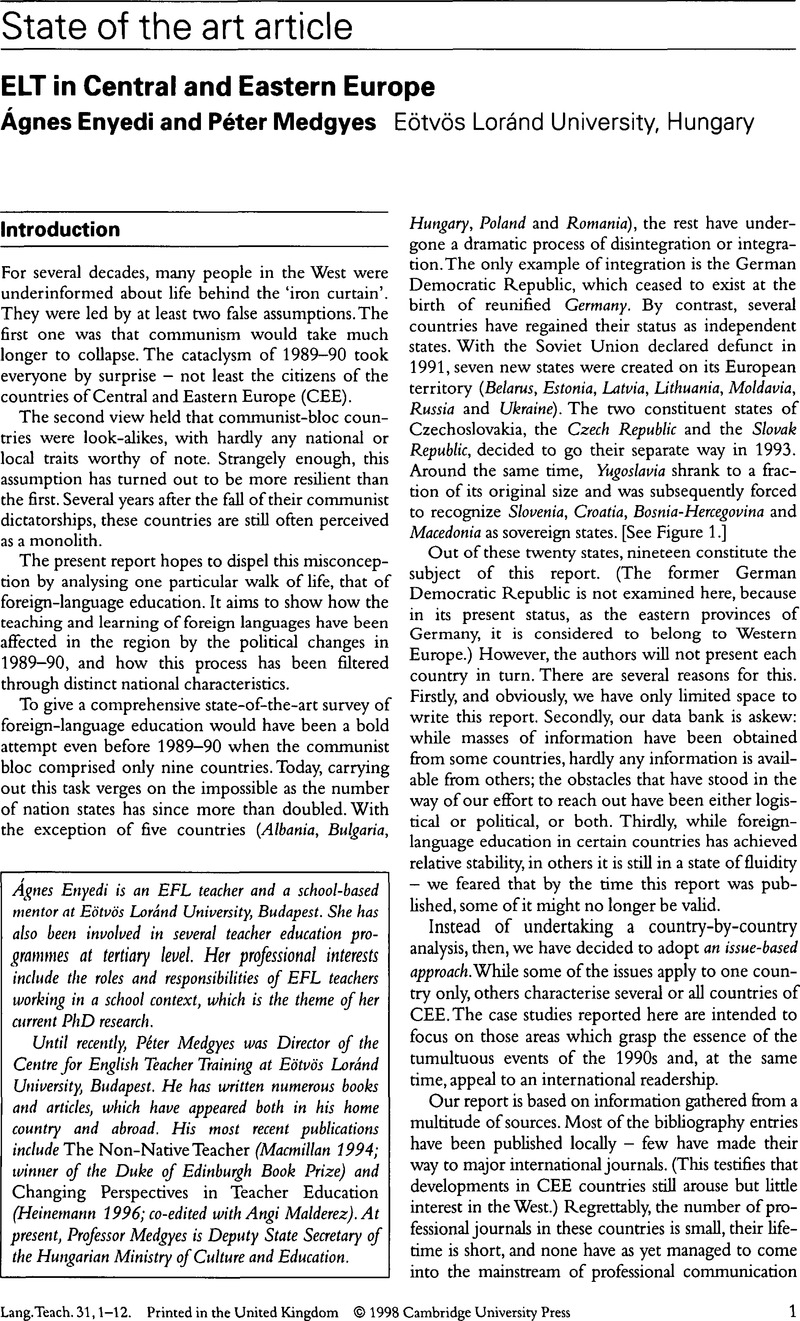Crossref Citations
This article has been cited by the following publications. This list is generated based on data provided by Crossref.
WEST, RICHARD
and
CRIGHTON, JOHANNA
1999.
Examination Reform in Central and Eastern Europe: Issues and trends.
Assessment in Education: Principles, Policy & Practice,
Vol. 6,
Issue. 2,
p.
271.
Halápi, Magdolna
and
Saunders, Danny
2002.
Language Teaching through Role-Play: A Hungarian View.
Simulation & Gaming,
Vol. 33,
Issue. 2,
p.
169.
Mitchell, Rosamond
and
Lee, Jenny Hye-Won
2003.
Sameness and difference in classroom learning cultures: interpretations of communicative pedagogy in the UK and Korea.
Language Teaching Research,
Vol. 7,
Issue. 1,
p.
35.
Vaicekauskienė, Loreta
2023.
The sociolinguistic dynamics of Russian and English in post‐1990 Lithuania.
World Englishes,
Vol. 42,
Issue. 4,
p.
749.
Orechova, Monika
2024.
That Other Europe: The Conceptualization of Central and Eastern Europe in (Higher) Education Research from 1990 to 2000.
Studia Litteraria et Historica,



